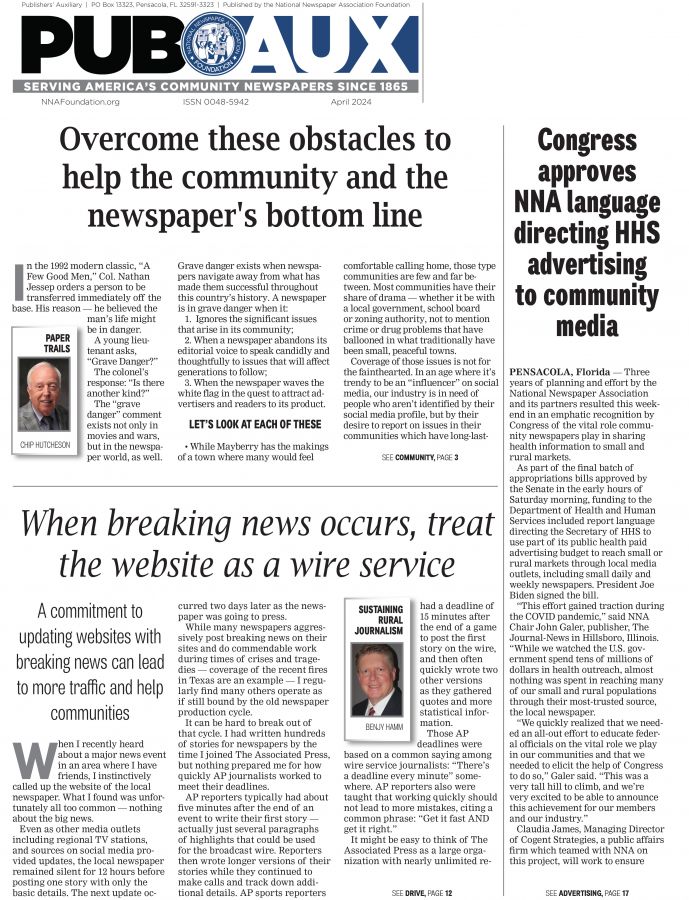DHS wants to reduce transparency
May 1, 2012
By David Placher
Currently, U.S. Customs and Border Protection is required to publish forfeiture notices of seized property valued at more than $5,000 in newspapers. However, the Department of Homeland Security wants to abolish this requirement and allow the CBP to simply post forfeiture notices on an infrequently viewed government website (www.forfeiture.gov). The DHS believes that such a change will save the federal government hundreds of thousands of dollars.
The National Newspaper Association joined the Public Notice Resource Center, along with American Court and Commercial Newspapers and the Newspaper Association of America, to oppose this change. The coalition submitted a letter to DHS in opposition to the proposal because few will receive notices from a government website, and it believes the DHS did not properly disclose the high cost of advertising and publishing forfeiture notices on a government website.
The point of public notice is to place information in places where people—not necessarily looking for it—are likely to find it, which ensures maximum government transparency and the ability of the public to hold the government accountable. It has been established that independent newspapers are the best outlets to distribute public notice because the information they contain is timely and interesting to the general public.
The DHS failed to cite any studies or reports that indicate the website www.forfeiture.gov has a following that would justify replacing newspapers as the means of distributing public notice. Also, guaranteeing or measuring government websites’ readership is difficult—even more so when excluding users that are government employees. Newspapers, however, are required to prove readership by providing records of paid subscribers, maintaining postal permits, or submitting to outside subscription audits. Newspapers rely on paid subscribers for survival and they spend a substantial amount in marketing and advertising to constantly maintain and expand the number of paid subscribers. The government, on the other hand, has little motivation to expand readership of its website because its financial survival is solely based on taxpayers.
In addition, the DHS failed to disclose whether it has considered the full cost of operating, maintaining, and archiving forfeiture notifications when using a government Internet site. There is no indication the DHS has fully evaluated the substantial marketing expense to attract a dedicated audience that could compare to the number of newspaper readers. Moreover, the DHS has not calculated the financial savings associated with forfeiture notices being published in local newspapers, especially when considering the DHS would be taking on the legal and financial responsibilities should the flawed proposal pass.
If you would like a copy of the letter submitted to the DHS go to www.pnrc.net or call 703-237-9806.







